To make your first electrified propulsion car, this Maserati Ghibli Hybrid , the Italians combined a four-cylinder block and 2.0 la petrol (from Alfa Romeo Giulia and Stelvio) with an electric motor that acts as an alternator/starter (although the conventional one remains for cold starts) and a electric compressor, changing almost everything in this engine.
There is a new turbocharger and the engine management was completely reprogrammed, which required a lot of work in some processes such as the synchronization of the electric compressor with the starter/generator motor.
In the end the four-cylinder engine has an output of 330 hp and a maximum torque of 450 Nm which are available at 4000 rpm. But, more than quantity, chief engineer Corrado Nizzola prefers to highlight the quality of that torque: “almost more important than the maximum value is the fact that 350 Nm are at the driver's right foot at 1500 rpm”.
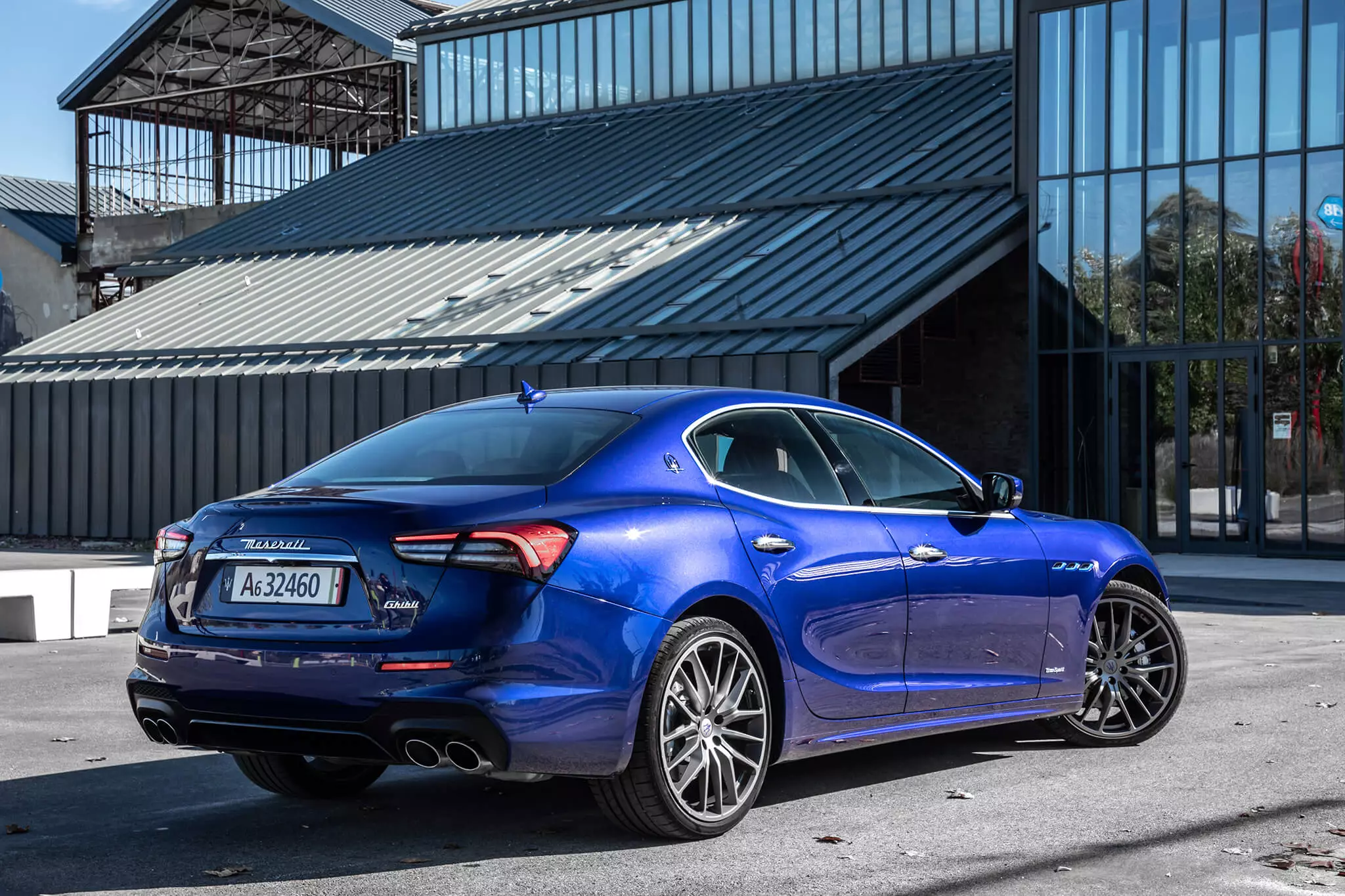
The light hybridization system (mild-hybrid) supports the gasoline engine, uses an additional 48 V network (with a specific battery in the back of the car) that feeds an electric compressor (eBooster) to generate overpressure until the turbocharger is sufficiently loaded and thus it is possible to minimize the effect of delay of the entry into action of the turbo (the so-called “turbolag”).
retouched
Before starting the test it's worth noting that, in this revised and improved generation, the Ghibli has a new front grille with a chrome finish (GranLusso) or lacquered piano (GranSport), while at the rear the main novelty is the new set of headlights with a style defined as boomerang.
Then there are also some dark blue decorative details both on the outside (the three traditional air intakes on the front side, the Brembo brake calipers and the spoke on the pillar logo) as well as on the inside (seam seams).
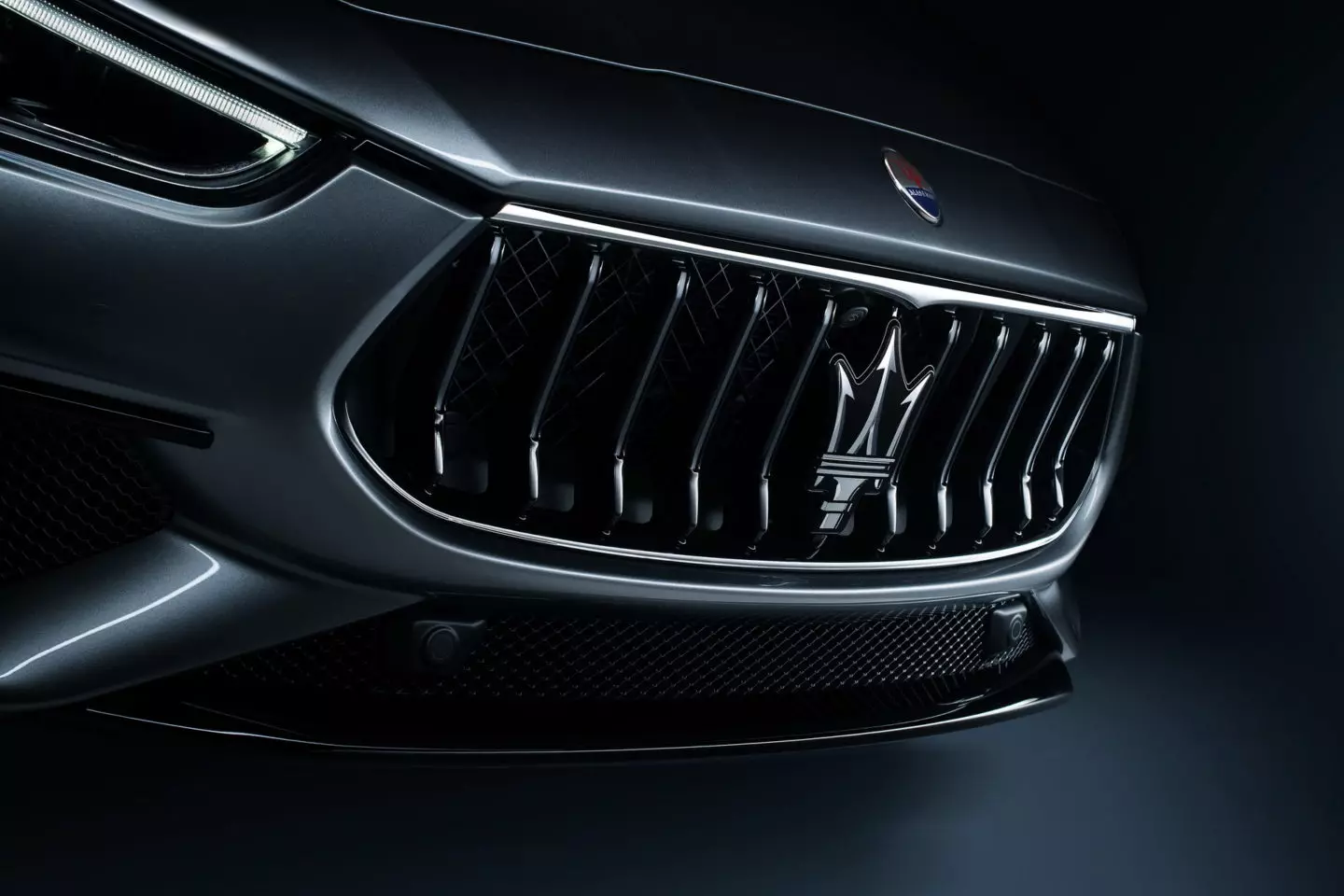
The front seats in leather have reinforced side support, the sports steering wheel has aluminum shift paddles and the pedals are made of stainless steel, with the pillars and roof covered in black velvet to make the environment more exclusive and sporty.
Connectivity upgrade
The center console accommodates an upgraded gearshift lever and drive mode buttons, as well as the forged aluminum dual rotary knob for audio volume control and other functions.
The multimedia system is new and is based on Android Auto and its information is shown on a screen of 16:10 format and size 10.1" (previously had a 4:3 and 8.4"), high resolution and tactile more modern looking (almost unframed around it) and with graphics and software “from this century” (even though the navigation system still does not provide updated traffic information in real time).
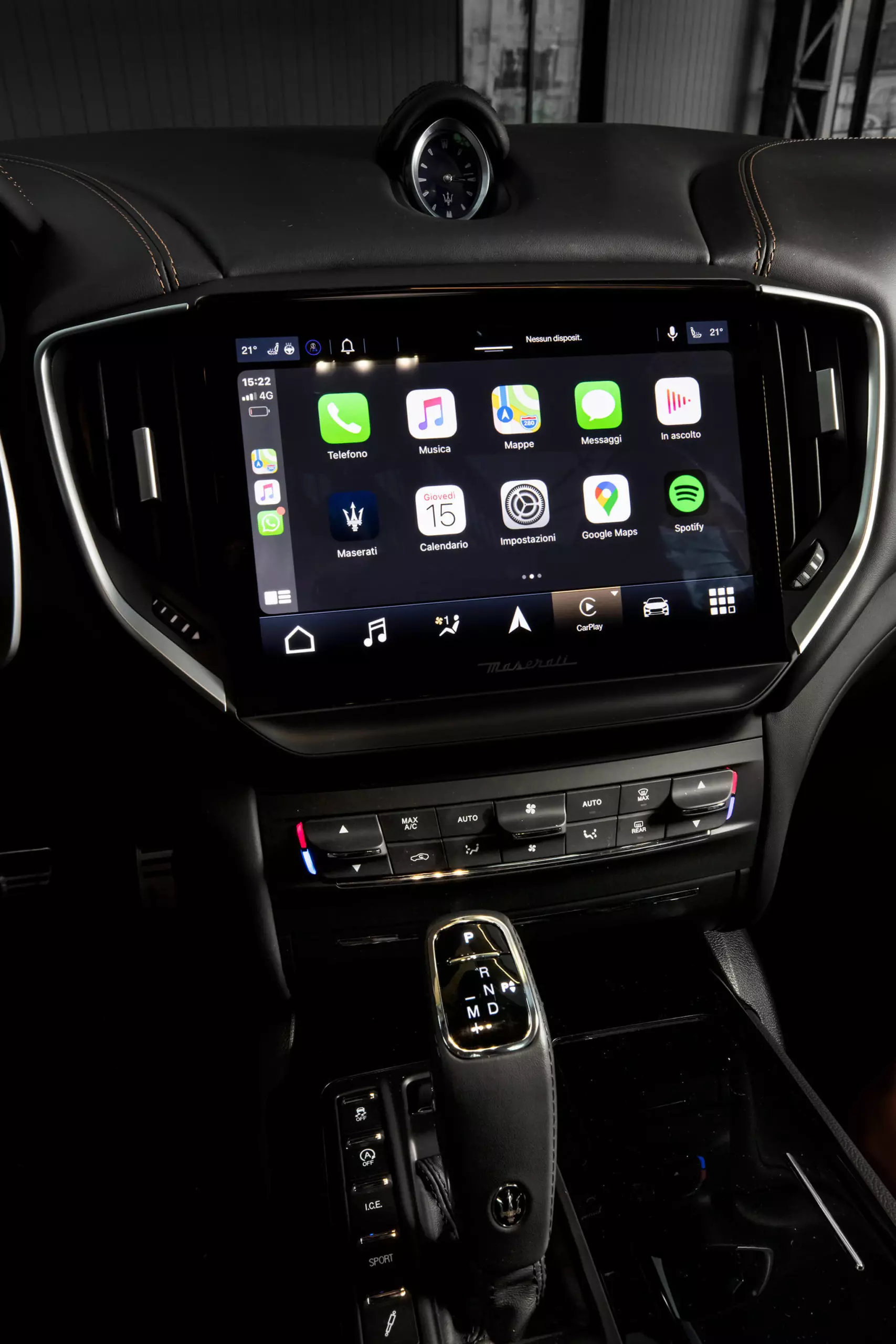
It also has connectivity through an application for smartphones and smartwatches (watches) or through home assistants (Alexa and Google). And a wireless charging system for mobile phones has been added.
The sound system can be standard (Harman Kardon with eight speakers and 280 W) or two optional: Harman Kardon Premium (10 speakers, with a 900 W amplifier) or a Bowers & Wilkins Premium Surround (15 speakers and amplifier). 1280W).
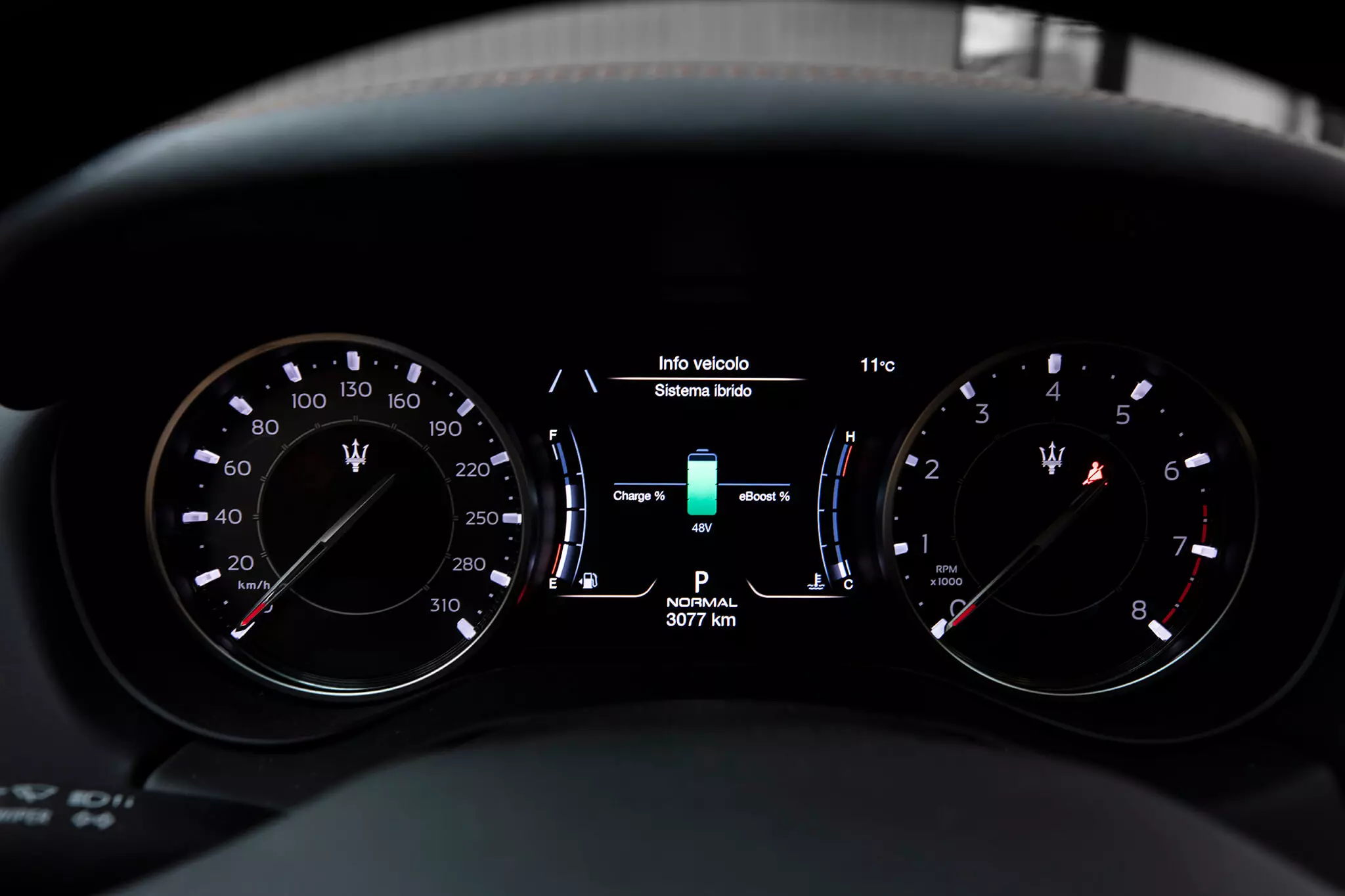
Another important progress is seen in the increase in driver assistance systems, where Maserati was a good decade behind its main rivals, mainly the Germans.
In terms of materials, coatings, finishes, this Ghibli respects the purest Maserati tradition, with the usual exquisite details, such as the leather on the seats and panels with the signature of Ermenegildo Zegna (combining fine grain leather with fiber inserts). 100% natural silk). This makes it easier to live la bella vita.
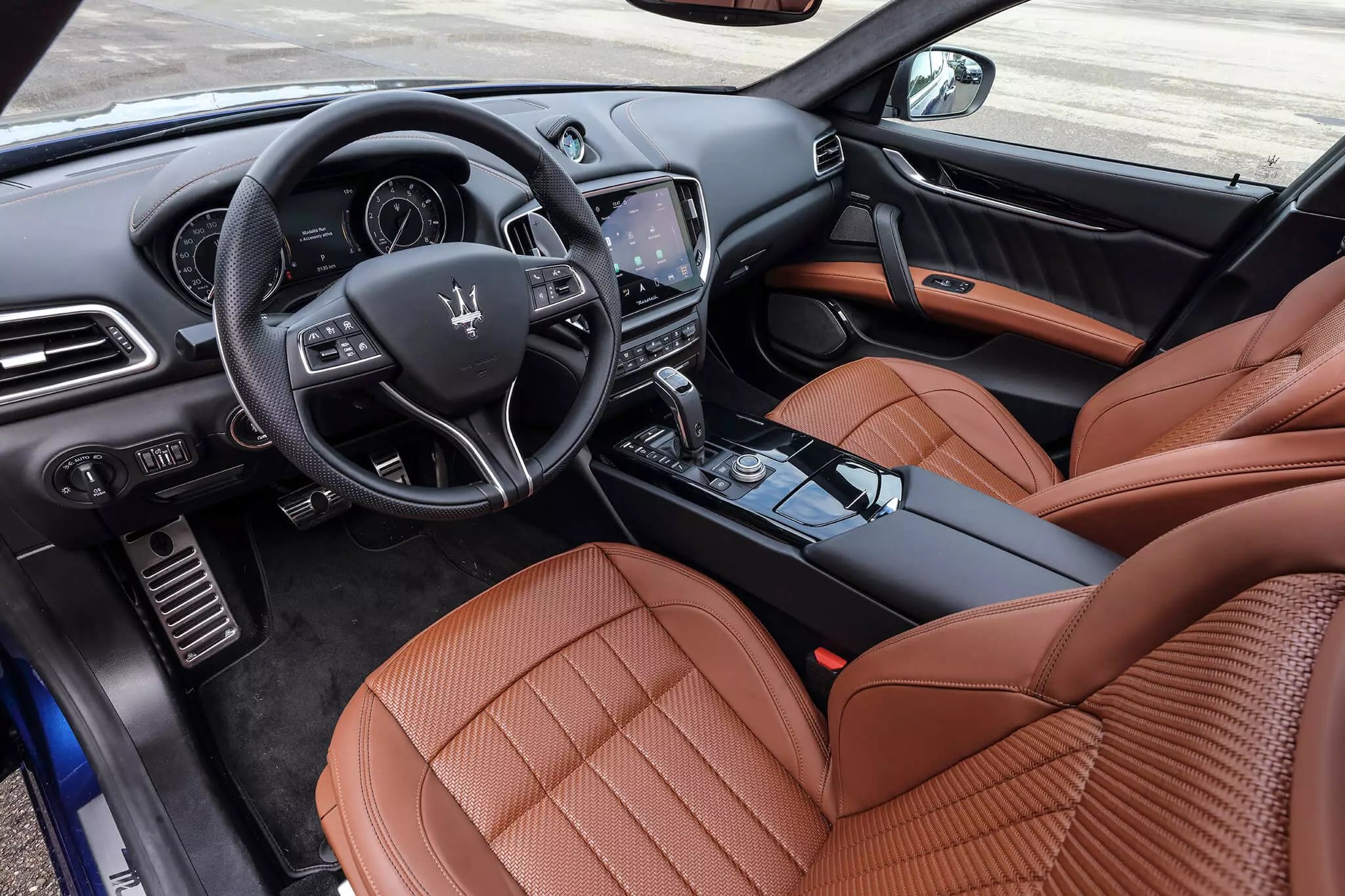
The space in the second row is ample in length and height, despite the coupé silhouette of the bodywork, but suitable for two passengers only (those sitting in the center will travel very uncomfortable, both because their seat is narrower and stiffer, as well as because there is a huge transmission tunnel in the floor (as always happens with all rear-wheel drive cars).
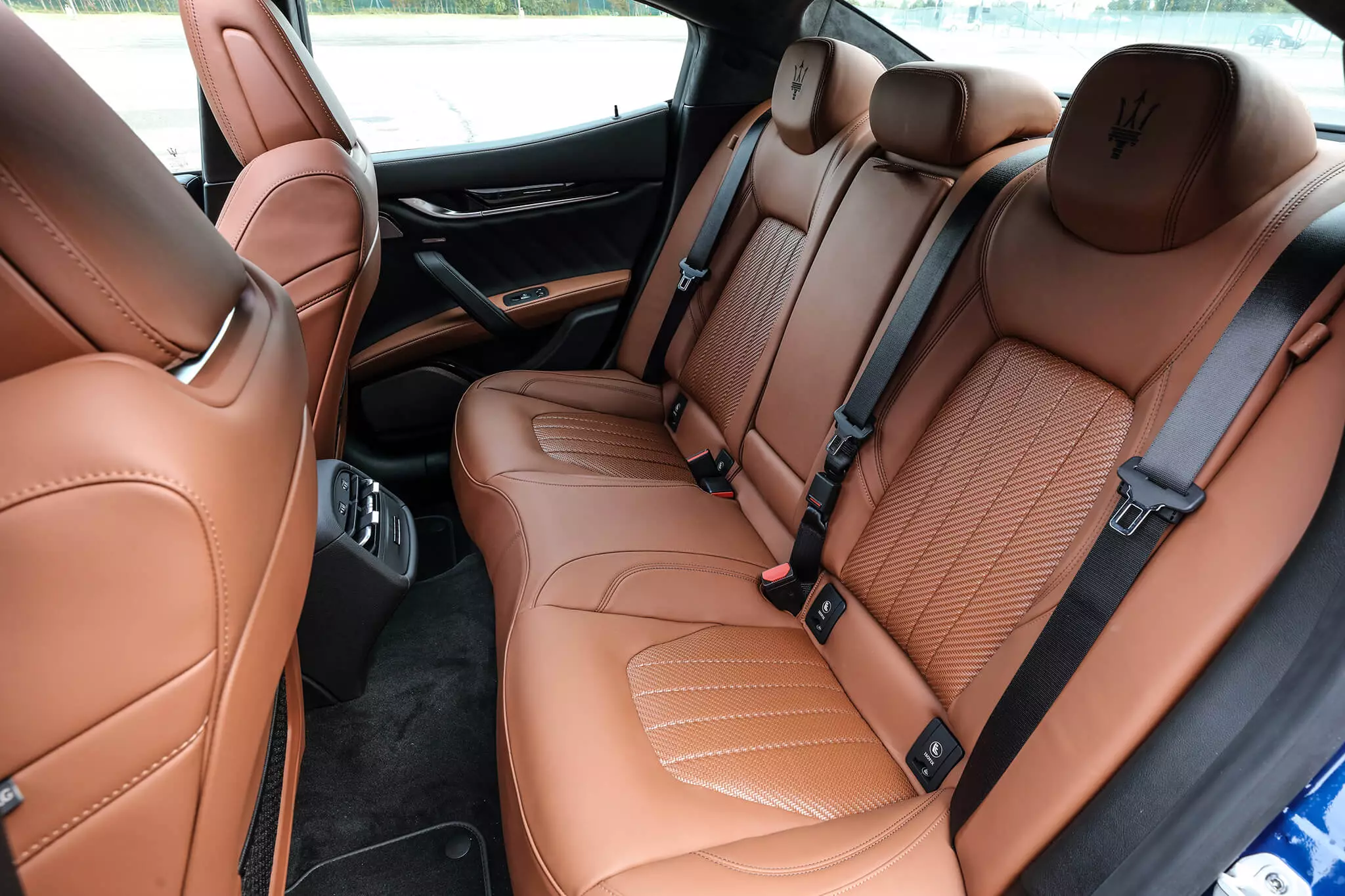
The trunk has a capacity of 500 liters (less than direct rivals Audi A6, BMW 5 Series and Mercedes-Benz E-Class) and is very regular in shape, although not too deep.
Competent motorization
Already underway, the Ghibli Hybrid convinces from the first few hundred meters, with a seductive smoothness in the initial changes, proving that the interaction with the ZF eight-speed automatic transmission is one of the secrets of the agility of this almost two-tonne limousine, that one might think only possible with bigger engines and with more cylinders.

And if we really want to raise the demand, then just switch to Sport mode to be able to shoot up to 100 km/h in a brief 5.7s and then proceed to a top speed of 255 km/h.
Demanding customers might be worried that the loss of two cylinders might have left the Ghibli Hybrid with too high a “voice timbre”, but in Sport mode that doesn't happen at all (in Normal it's quieter, more typically four cylinders) and without using amplifiers: the trick is the adjustment in the fluid dynamics of the exhausts and the adoption of resonators.
well behaved
Crucial for a sports limousine to shine in the eyes of the demanding driver, who is its target customer, is its behavior on the road. One of the right decisions was to separate the driving modes from the settings of the electronic dampers that are independently variable (Skyhook), so that it would be possible to leave the chassis in Comfort (limiting the transverse and longitudinal movements of the body) and keep the engine “with the tense muscles”.
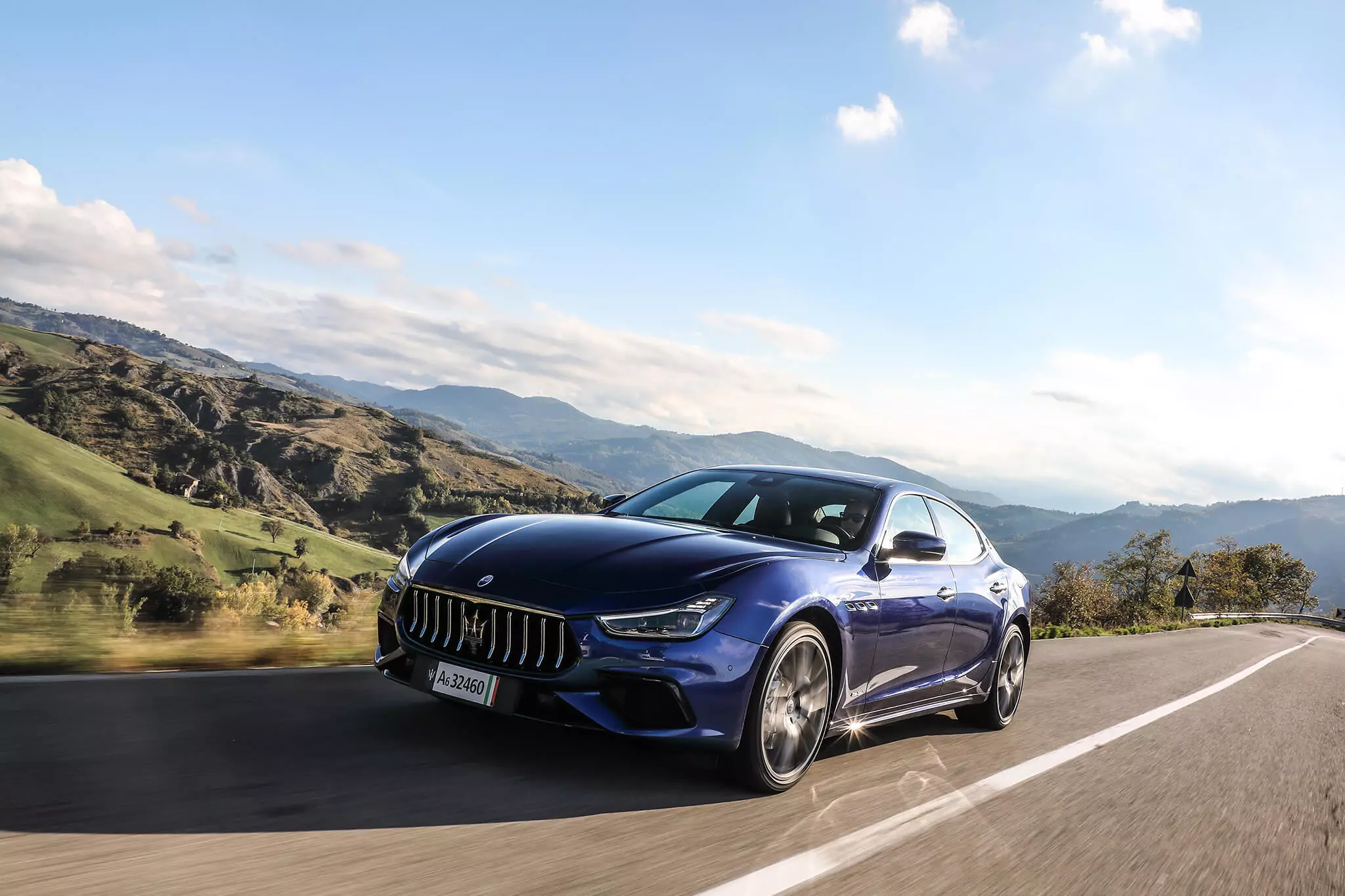
On winding roads the front of the car is lighter with this smaller engine and this is a good thing because it limits the tendency to understeer. The steering contributes to a good evolution in the way the Ghibli treads the road, showing itself capable of transmitting information on how the front wheels relate to the asphalt and having lost some more “nervous” reactions that were known to it at the center point. of the steering wheel.
On the other hand, it's positive to feel that, in Sport mode, your accuracy really improves, going well beyond simply increasing weight through electrical assistance. Even though it is not exactly an effective Porsche when the demand is greater, it still achieves a very satisfactory result.
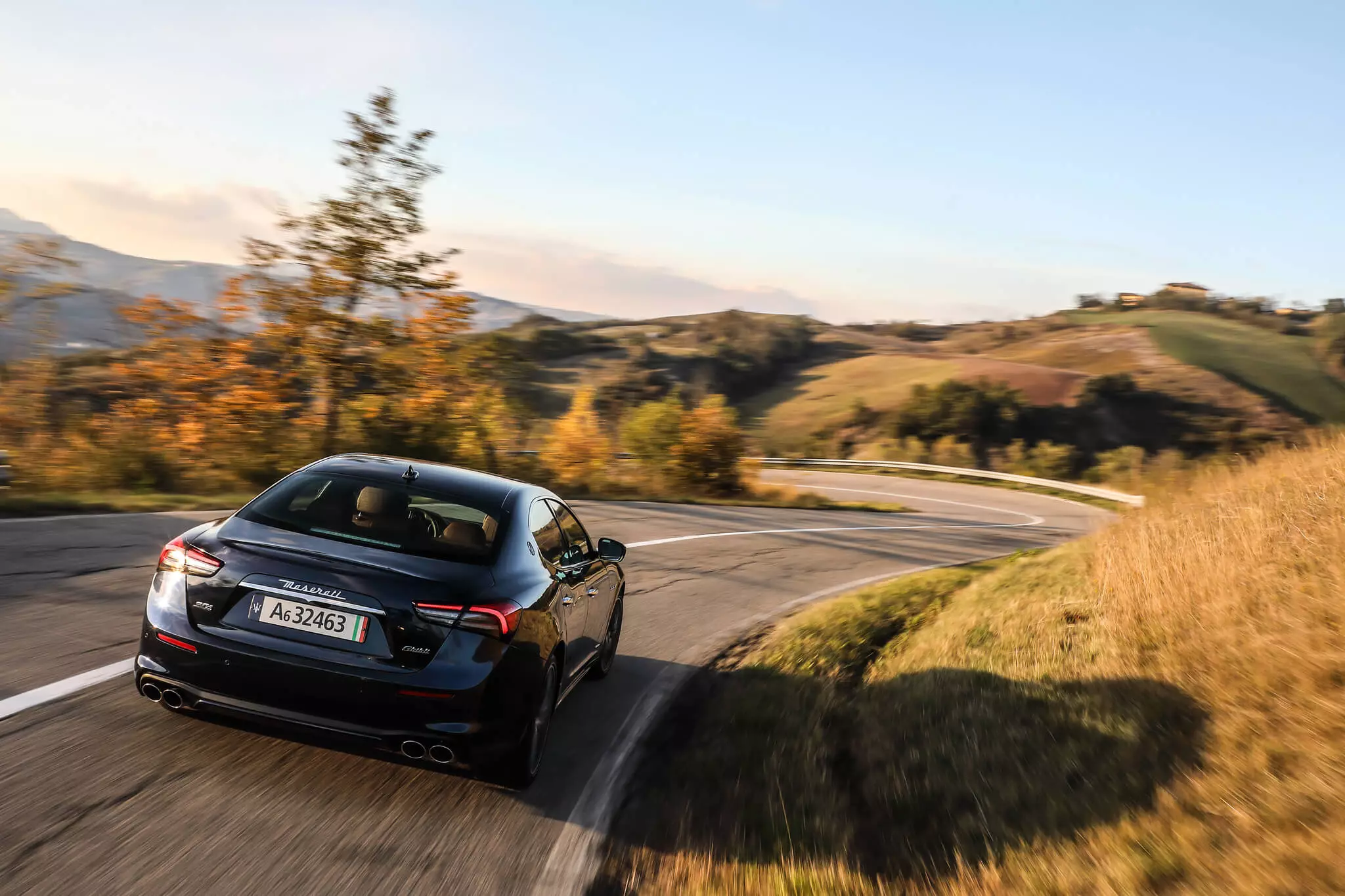
The different driving modes – ICE (Increased Control and Efficiency), Normal and Sport – are really different, which allows the Ghibli to adapt well to any type of road or the driver's mood at any given time and manages to emphasize different personalities.
new access step
Even if this is not a priority that makes people sleepless when buying a 96 000 euros car, the average consumption is not excessively high, at around 12 l/100 km (but, of course, well above the homologated average of 9.6 l/100 km).
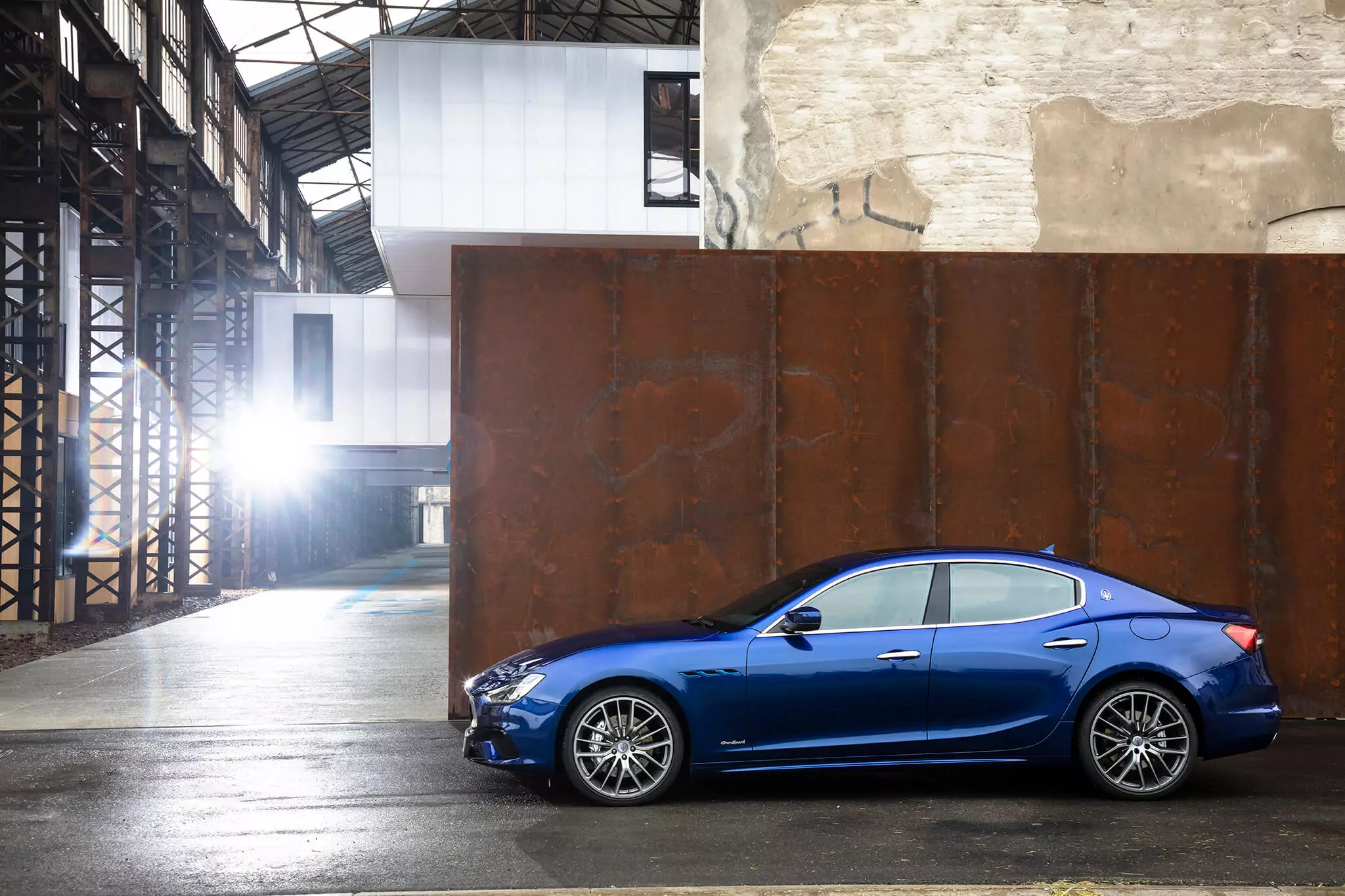
On the other hand, Maserati announces CO2 emissions 25% lower than the gasoline V6 and at the same level as the Diesel V6, which no longer makes sense as it costs €25,000 more than this Hybrid, which becomes the new entry step to the Ghibli range and the only one to cost less than €100,000.
Technical specifications
| Maserati Ghibli Hybrid | |
|---|---|
| MOTOR | |
| Architecture | 4 cylinders in line |
| Capacity | 1998 cm3 |
| Distribution | 2 ac.c.c.; 4 valves/cil., 16 valves |
| Food | Injury direct, turbocharger |
| power | 330 hp at 5750 rpm |
| Binary | 450 Nm at 2250 rpm |
| STREAMING | |
| Traction | back |
| Gear box | 8-speed automatic (torque converter) |
| Chassis | |
| Suspension | FR: Independent of overlapping triangles; TR: Multiarm Independent |
| brakes | FR: Ventilated discs; TR: Ventilated Discs |
| Direction / Number of turns | Electrical assistance/N.D. |
| Dimensions and Capabilities | |
| Comp. x Width x Alt. | 4.971 m x 1.945 m x 1.461 m |
| Between axles | 2,998 m |
| trunk | 500 l |
| Deposit | 80 l |
| Weight | 1878 kg |
| Tires | 235/50 R18 |
| Installments, Consumptions, Emissions | |
| Maximum speed | 255 km/h |
| 0-100 km/h | 5.7s |
| Braking 100km/h-0 | 35.5 m |
| mixed consumption | 8.5-9.6 l/100 km |
| CO2 emissions | 192-216 g/km |
